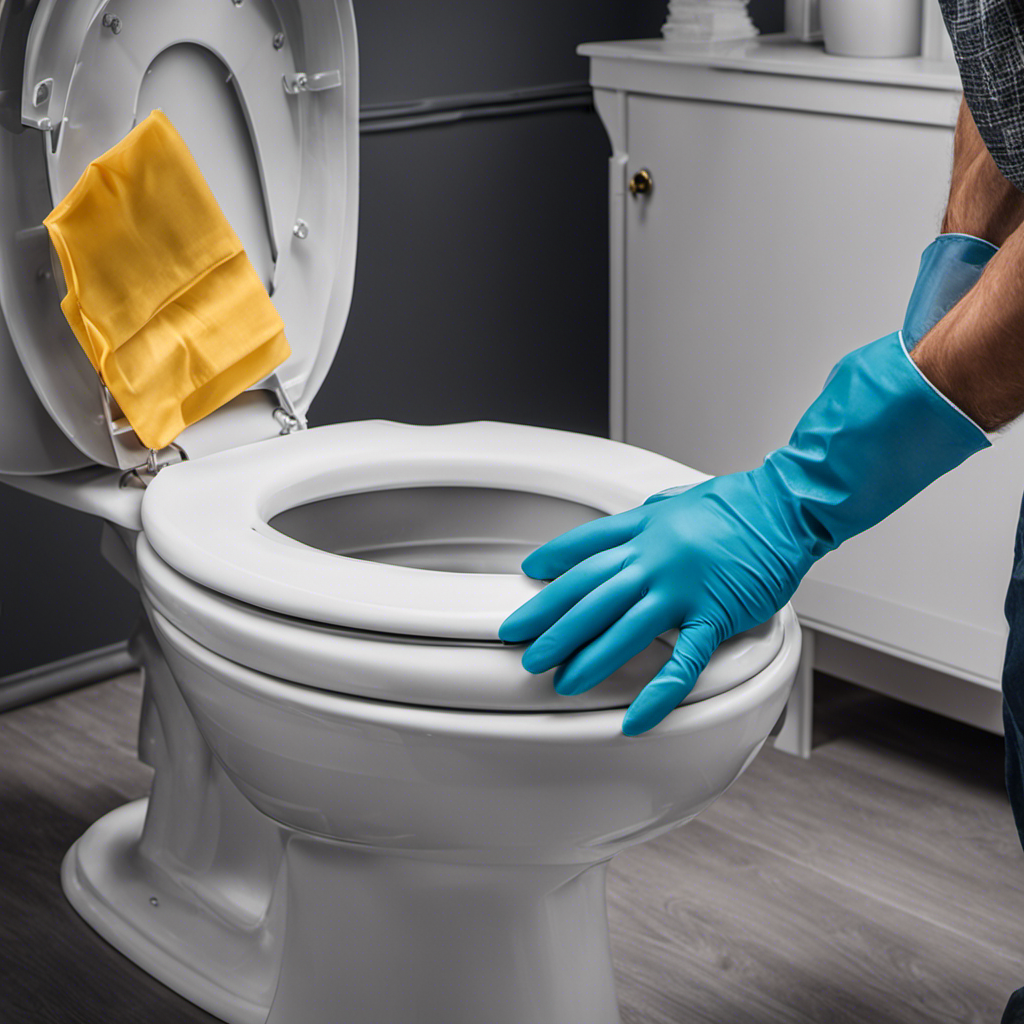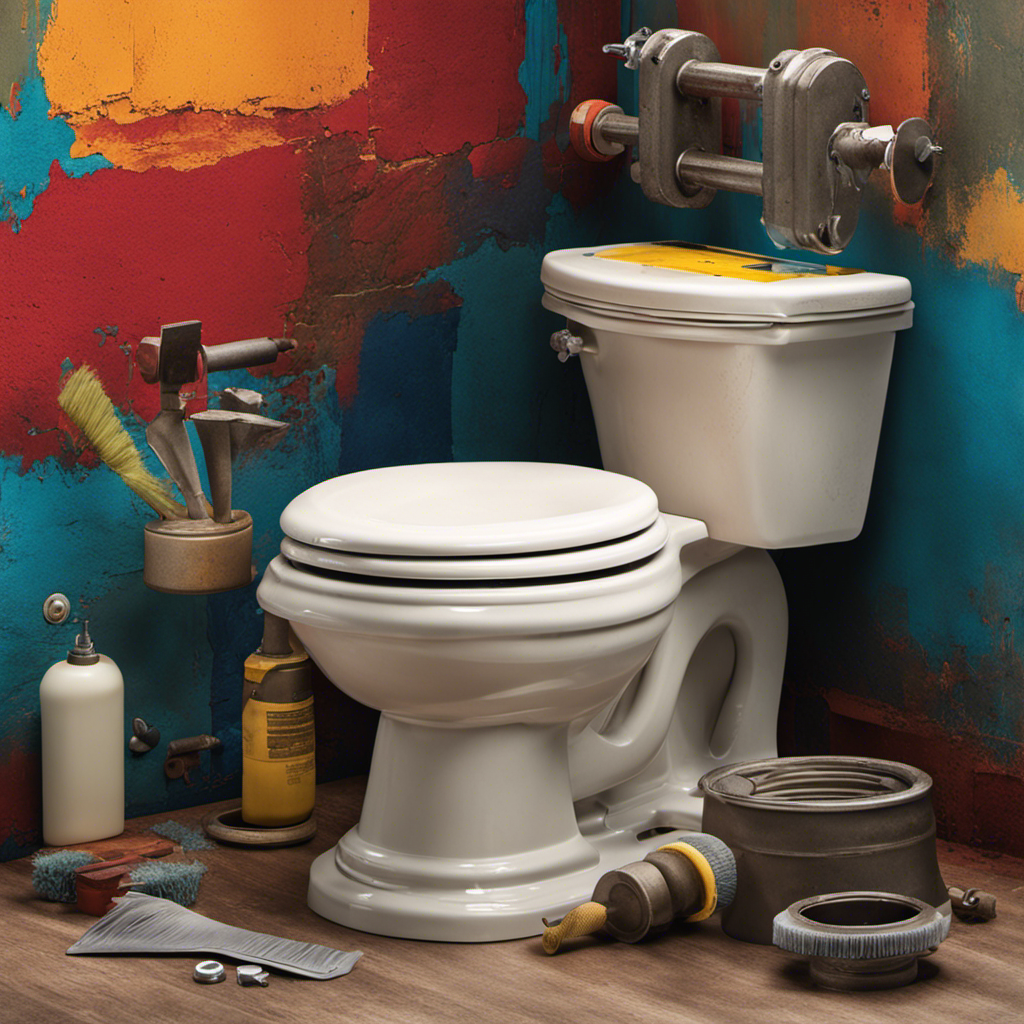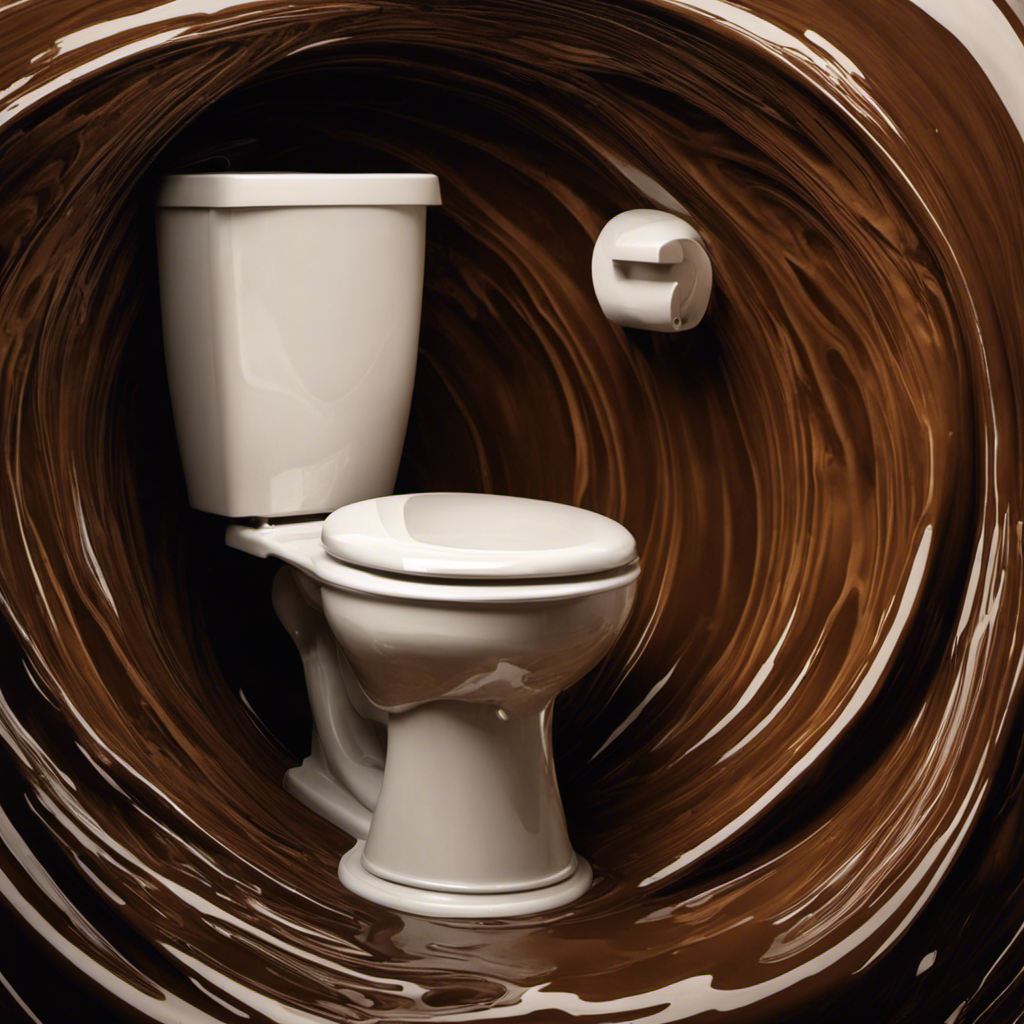So, you’re tired of that annoying sound your toilet makes when it flushes, huh? Well, lucky for you, I’ve got just the solution.
In this handy guide, I’ll walk you through the simple steps of changing a toilet flapper. Trust me, it’s not as complicated as it sounds. With a few basic tools and a little bit of know-how, you’ll have that flapper replaced in no time.
So, let’s get started, shall we?
Key Takeaways
- The toilet flapper controls the flow of water in the toilet and is located at the bottom of the tank.
- Signs of a faulty flapper include constant running water, water leakage around the base of the toilet, weak flushes, and phantom flushes.
- Gather the necessary tools and materials, such as a compatible flapper for your toilet, before starting the repair process.
- To remove the old flapper, turn off the water supply, flush the toilet to drain the tank, and disconnect the flapper from the flush valve.
Understanding the Role of a Toilet Flapper
The toilet flapper is responsible for controlling the flow of water in your toilet. It is a small, rubber component located at the bottom of the tank.
The importance of a properly functioning flapper cannot be overstated. It ensures that water is released from the tank into the bowl when you flush, and then seals the tank to prevent water from continuously flowing.
Regular maintenance of the flapper is necessary to avoid any potential issues. Over time, the flapper can become worn out or develop leaks, causing water wastage and higher utility bills.
To maintain the flapper, periodically check for any signs of damage or deterioration, such as cracks or discoloration. If necessary, replace the flapper to ensure optimal performance and water efficiency.
Identifying Signs of a Faulty Toilet Flapper
Check for signs like constant running or water leakage, as these could indicate a faulty flapper. If you notice any of these signs, it’s important to address the issue promptly to avoid wasting water and potential damage to your toilet.
Here are some common signs of a faulty toilet flapper:
-
Constant running water: If you hear water running continuously in your toilet, it could be a sign that the flapper is not sealing properly and allowing water to flow into the bowl.
-
Water leakage: If you notice water pooling around the base of your toilet or on the floor, it could be due to a faulty flapper that is not properly sealing the flush valve.
-
Weak flush: If your toilet is not flushing with enough power, it could be a result of a worn-out flapper that is not allowing enough water to flow into the bowl.
-
Phantom flushes: If your toilet flushes on its own without anyone pressing the handle, it could be due to a flapper that is not sealing properly and allowing water to slowly leak into the bowl.
Identifying these signs can help you troubleshoot common toilet problems and take the necessary steps for repairing toilet leaks and replacing a faulty flapper.
Gathering the Necessary Tools and Materials
Gathering all the tools and materials you need is essential for successfully repairing a faulty toilet flapper. When it comes to choosing the right toilet flapper, make sure to check the make and model of your toilet to ensure compatibility. Additionally, consider the type of flapper you want – whether it’s a universal flapper or one specifically designed for your toilet brand.
Now, let’s discuss the common mistakes to avoid when changing a toilet flapper. First, make sure to turn off the water supply to the toilet before starting any repairs. Secondly, carefully remove the old flapper without damaging any other parts. Finally, ensure that the new flapper is properly installed and adjusted to prevent any leaks.
Step-by-Step Guide to Removing the Old Flapper
To successfully remove the old flapper, you’ll need to start by turning off the water supply to your toilet. Here is a step-by-step guide on how to remove the old flapper:
-
Step 1: Locate the water shut-off valve behind the toilet and turn it clockwise to shut off the water supply.
-
Step 2: Flush the toilet to drain any remaining water from the tank.
-
Step 3: Identify the flapper, which is a rubber or plastic piece connected to the flush valve at the bottom of the tank.
-
Step 4: Disconnect the flapper by removing the chain or strap that connects it to the flush lever.
Installing a New Toilet Flapper
Make sure you have a new flapper ready before proceeding with the installation.
To install a new toilet flapper, follow these steps:
-
Turn off the water supply to the toilet by shutting off the valve located behind the toilet.
-
Flush the toilet to remove any remaining water from the tank.
-
Remove the old flapper by disconnecting it from the flush valve chain and detaching it from the overflow tube.
-
Take the new flapper and align it with the flush valve opening. Make sure it sits securely.
-
Attach the flapper to the flush valve chain, ensuring it has enough slack for proper movement.
-
Reconnect the chain to the flush handle, adjusting the length if necessary.
-
Turn the water supply back on and let the tank fill.
By following these steps, you can successfully install a new toilet flapper, resolving any issues you may have been experiencing with your toilet’s flushing mechanism.
Remember to regularly check and maintain your flapper to prevent future problems.
Frequently Asked Questions
Can I Use Any Brand of Toilet Flapper for My Toilet?
Yes, you can use any brand of toilet flapper for your toilet. However, using the same brand of toilet flapper as your toilet has its advantages, such as better compatibility and a smoother installation process.
How Often Should I Replace My Toilet Flapper?
Toilet flappers typically last around 5 years before needing replacement. Signs that it needs replacing include constant running water, low water levels, or difficulty flushing. Regular inspection can help identify these issues.
Do I Need to Turn off the Water Supply Before Replacing the Toilet Flapper?
Yes, it is important to turn off the water supply before replacing the toilet flapper. This ensures that you won’t have any water flow while you’re working and makes the process smoother.
Can I Replace the Toilet Flapper Without Removing the Tank From the Toilet Bowl?
Yes, you can replace the toilet flapper without removing the tank from the toilet bowl. Start by turning off the water supply, draining the tank, removing the old flapper, installing a universal flapper, and attaching the flapper chain.
Can I Repair a Faulty Toilet Flapper Instead of Replacing It?
I can repair a faulty toilet flapper instead of replacing it. Sometimes the flapper just needs a good cleaning or adjustment to fix common causes of failure, like mineral buildup or a misaligned chain.
Conclusion
In conclusion, changing a toilet flapper is a simple and straightforward process that anyone can do. By following the step-by-step guide and gathering the necessary tools and materials, you can easily replace a faulty flapper and restore your toilet’s functionality.
So don’t let a leaky toilet flapper cause water wastage and inconvenience. Take charge and fix it yourself. Remember, with a little effort and know-how, you can save money and contribute to a more sustainable future.










